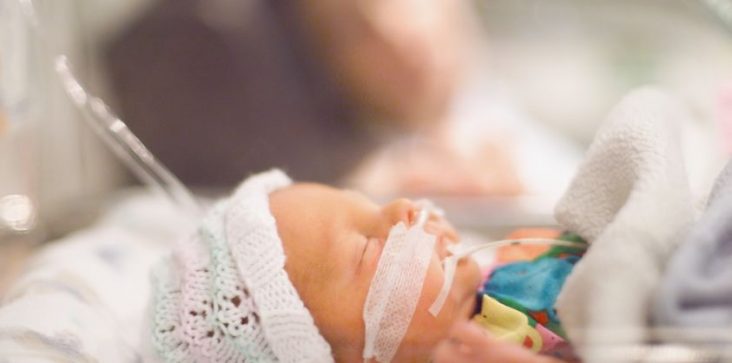ACHI study: Many teen moms give birth again soon after
by June 2, 2024 9:06 am 1,398 views

About a quarter of the 18-19-year-olds in Arkansas who gave birth in the years 2019-21 were pregnant again less than 18 months later. Most teen births in Arkansas were to 18-19-year-olds, but 331 over those three years occurred among females ages 11-15.
Those numbers came from an Arkansas Center for Health Improvement analysis of birth records and health insurance claims data.
The researchers found there were 5,984 births to females ages 18-19 over that time period, or 158.5 births per 1,000 females in that age group. There were 1,569 births to females ages 16-17, or 40.5 births per 1,000. There were 331 births age 15 and under, or 3.4 births per 1,000.
Many of the young mothers conceived a second pregnancy within 18 months of their first pregnancy, which is less than the recommended spacing of at least 18 months. Shorter intervals have been linked to a higher risk of preterm labor and low birthweight babies.
By age group, those percentages were:
– 19-year-olds, 24.1%
– 18-year-olds, 26.6%
– 17-year-olds, 22.2%
– 16-year-olds, 16.8%
– 15-year-olds, 12.8%
– 14-year-olds, 6%
– 13 and younger, 4.8%
Southeast Arkansas had the highest birth rates among females ages 15-19. That region had 38.2 births per 1,000. Northeast Arkansas had the second highest rate with 33.3 births per 1,000. Southwest Arkansas had 27 births, and central Arkansas had 24.1 births. Northwest Arkansas had 23.6 births, the lowest among the five regions.
While Northwest Arkansas had the lowest rates, about 18% of girls in that region who gave birth at age 14 were pregnant again less than 18 months later.
The researchers found in that region, there were 950 births to teens ages 18-19, or 111.6 births per 1,000 females those ages. There were 257 births to teens ages 16-17, or 33.4 births per 1,000. There were 52 births to females ages 15 and under, or 3.2 births per 1,000.
The researchers defined Northwest Arkansas as Washington, Benton, Carroll and Madison counties.
Madison and Carroll counties had much higher birth rates among females ages 15-19. Madison County’s rate was 40.4 births per 1,000, while Carroll County’s rate was 36.3. Washington County’s rate was 20.4 births, while Benton County’s rate was 18.4.
Arkansas overall had one of the nation’s highest birth rates among 15-19-year-olds at 24.6 births per 1,000 teens in 2022, according to the Centers for Disease Control and Prevention. The national average that year was 13.5 births per 1,000 teens. Only Mississippi had a higher percentage at 26.4. All of Arkansas’ neighbors were also in the bottom eight except for Missouri, which was 39th.
New Hampshire had the lowest rate at 4.6 pregnancies per 1,000 females ages 15-19. Arkansas’ percentage was more than five times higher.
Arkansas’ ranking and numbers improved from 2021, when it was last in the country at 26.5 births per 1,000 females ages 15-19.
In fact, while Arkansas has been at or near the bottom of state rankings for years, the percentages have been on a downward trend. In 2014, Arkansas’ rate was 39.5 births per 1,000 teens ages 15-19. In 2005, it was 58.6.
Likewise, the numbers have been falling nationally from 61.8 births per 1,000 females ages 15-19 in 1991 to 13.2 in 2023, according to provisional CDC data published in April.
Dr. Joe Thompson, ACHI president and CEO, said social and economic factors contribute to Arkansas having a higher teen birth rate than the rest of the country.
“We know that education, poverty, and social circumstances nationwide are associated with higher teen pregnancy rates,” he said. “Our sister states around us have high teen pregnancy rates.”
Thompson said teens who give birth are less likely to finish school, less likely to be in the workforce and to advance in it, and more likely to need social supports.
He said reproductive health education is needed for both teen males and females. He said some families would prefer to do that themselves while others would prefer a more clinical approach.
“We should respect both pathways and those that are in between, but we clearly have a need here that we need to address,” he said.
Thompson said for all sexually active teens, the use of long-acting, reversible contraception could increase the intentionality of pregnancies. For early teens who get pregnant, such contraception should be considered by both clinicians and families to prevent a second pregnancy.
He said both Medicaid and commercial insurance cover such contraceptives, and the American College of Obstetricians and Gynecologists recommends them.
“Clearly we are failing to educate our young teens about reproductive health issues that first and foremost is a family’s obligation and responsibility, but we need a safety net strategy for when that education is not adequate,” he said.
